November 2008: Traveling to Bosnia was one of the highlights of my two weeklong backpacking trip across the Balkans with my friend Dan because I was able to put faces and names to the victims, I watched in the news reports during the 90s when I was a young kid. I not only learned how horrible the war was for the Bosnian Muslims, but I developed a better understanding for their indomitable spirit and their strength as a people to endure and rebound from what can only be considered an attempted genocide by the Bosnian Serbs and Europe’s bloodiest conflict since World War II. My time in Bosnia was limited to 4 days in Mostar (1 night) and Sarajevo (2 nights) but in those 4 days I learned so much about the conflict that once plagued Bosnia and the underlying tension that still remains.
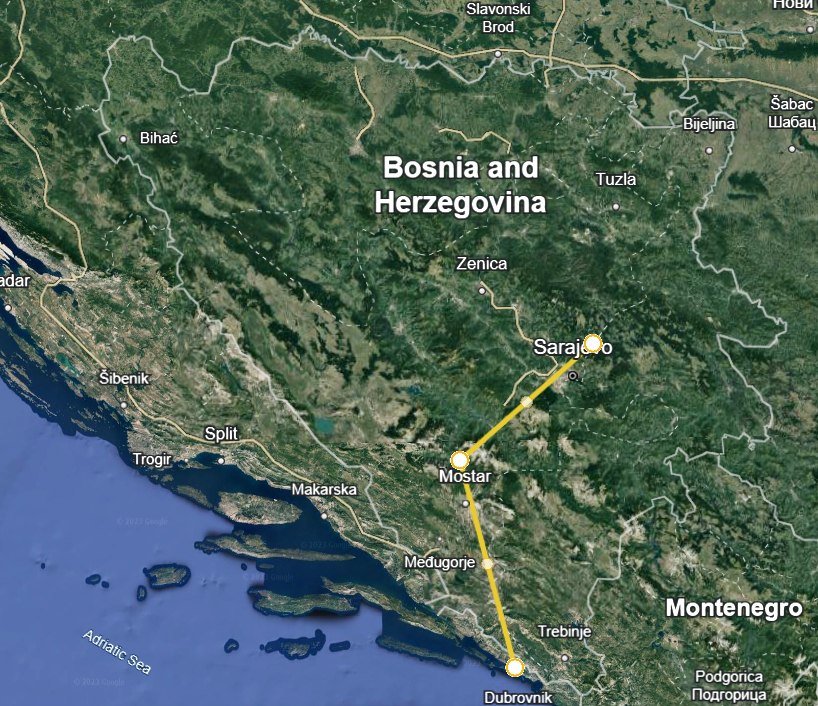
My route across Bosnia
When communist Yugoslavia broke up in 1989, it left multiple ethnic groups, Croats, Serbs, and Bosnian Muslims all vying for power in Bosnia, which led to civil war that would end up killing 100,000 people.
Mostar
Our first stop was Mostar, a beautiful stone village with its iconic Stari Most (Old Bridge), a reconstructed medieval arched bridge. The bridge was destroyed in the war between the two different ethnic groups of Mostar, the Croats and Bosnian Muslims who live on opposing sides of the bridge. There is peace now, but buildings pockmarked with bullet holes and bomb fragments still remain and the two ethnic groups are segregated from another by the river. The Stari bridge has been rebuilt in its original design.
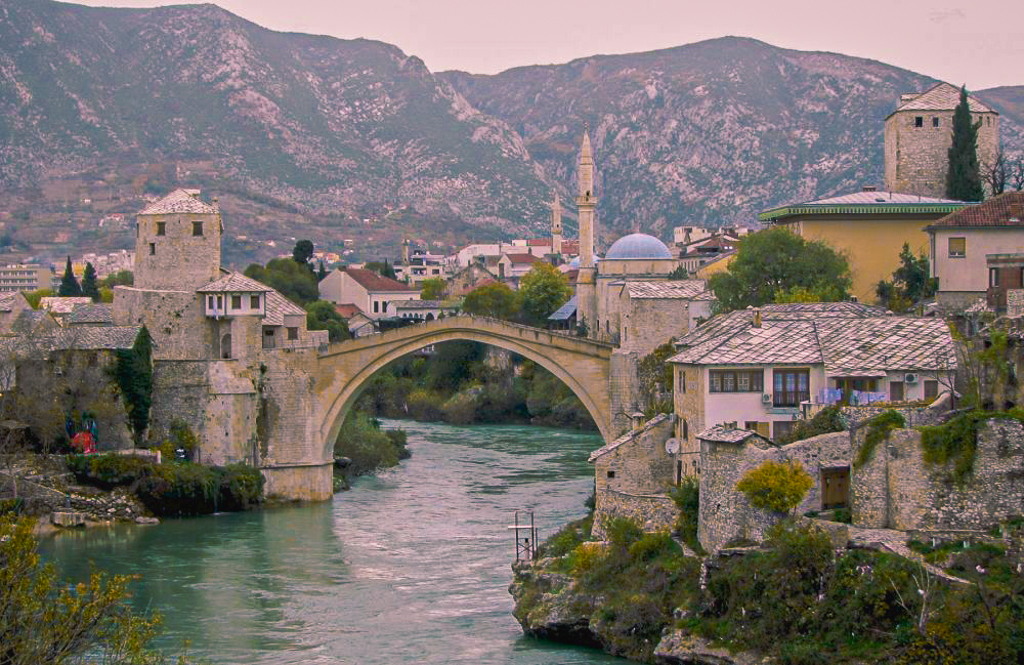
Stari Bridge
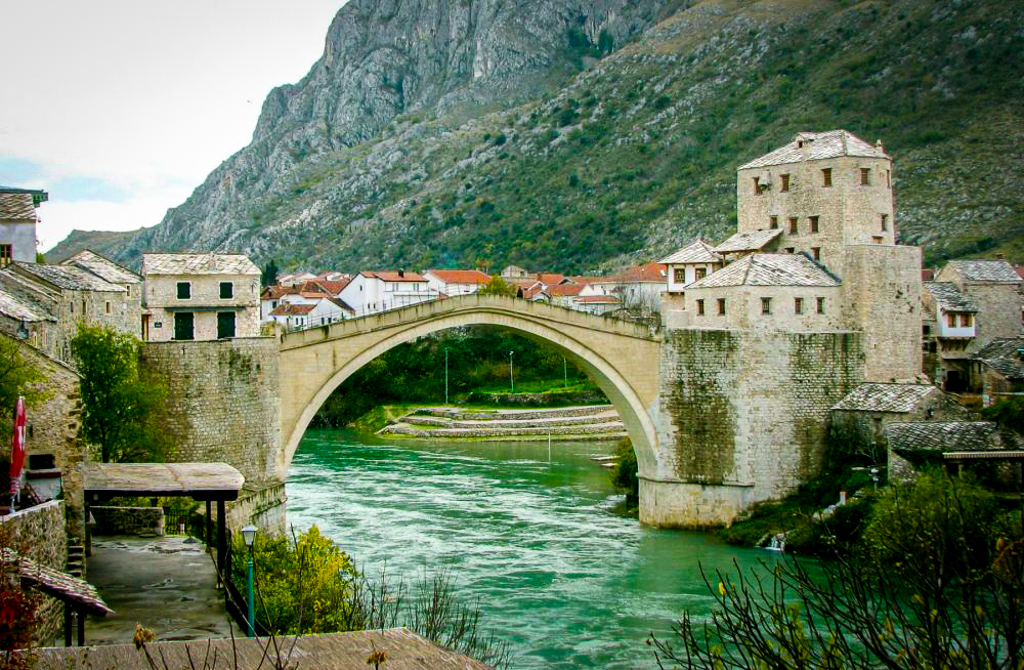
Stari Bridge
To reach Mostar, we took a bus from Dubrovnik and when we arrived at the bus station as was the case in all places we arrived at in the Balkans during our trip, we were approached by several people offering us homestays. We often chose homestays because it was cheap, but it did help spread money into the local economy to families that badly needed it. It also enabled us to gain a better understanding of the community. We agreed on staying with a family that lived in a small humble home located down an alley of several houses that were burnt down in the war or covered in bullet holes. Our room was austere and freezing but it was also very economical. We explored Mostar on foot and spent most of our time visiting the cobblestone streets in the area around the Stari bridge.
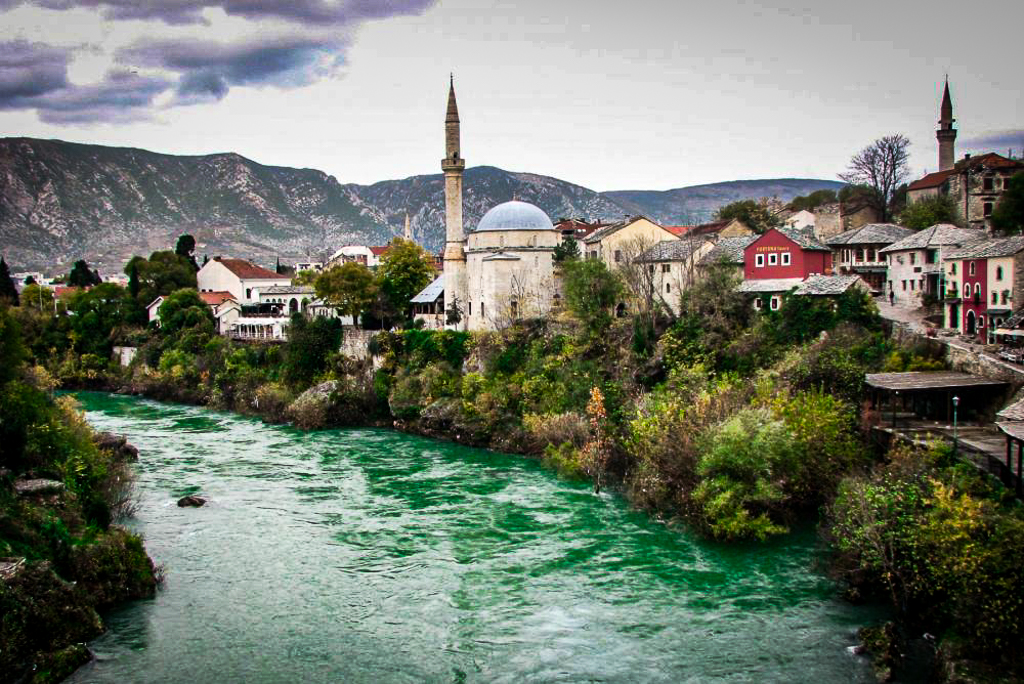
Mosque at Mostar

Stari bridge
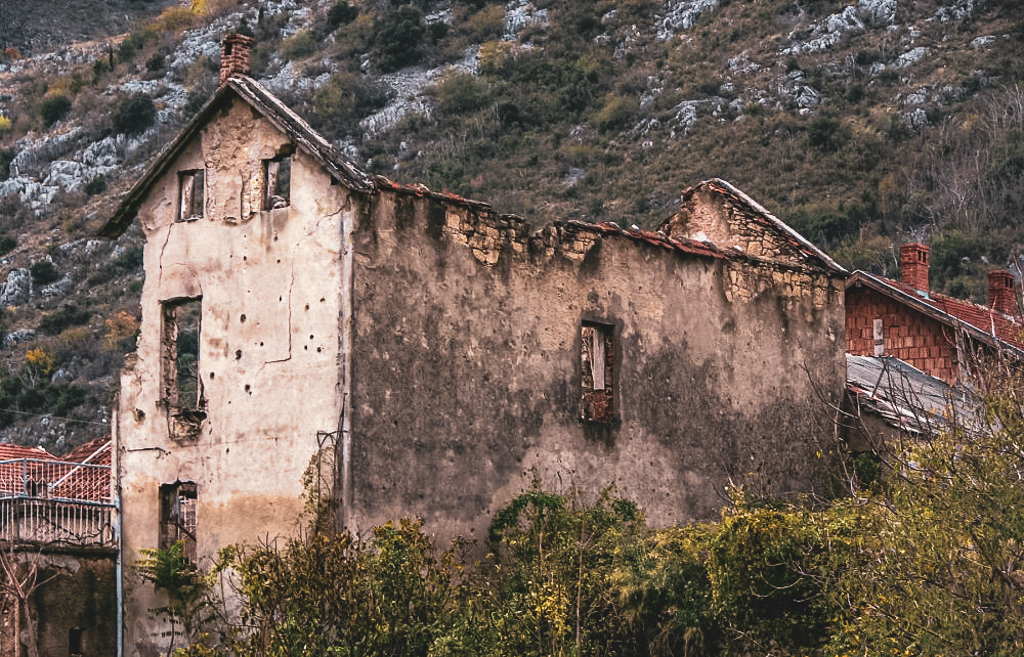
War damaged homes
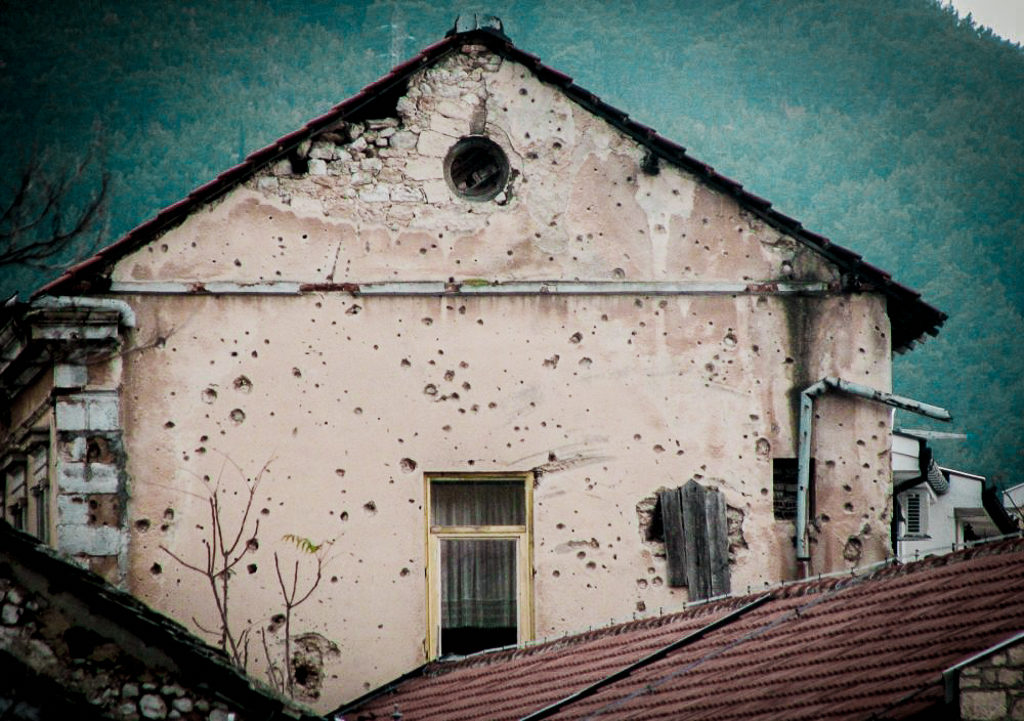
War damaged homes
Serejevo
From Mostar we took a bus to Sarajevo. I had initially planned to visit a mountain village, but the weather was awful, and I became so intrigued by the history of Sarajevo in the Bosnian war that i decided to spend the last few days in Bosnia visiting Sarajevo. Despite most of the city of Sarajevo being destroyed in the war, it is a beautiful city located at the bottom of a mountainous valley. Sarajevo is also notorious for being the location of an assassination that sparked the beginning of World War I when a young Serb assassin assassinated the Prince Archduke Ferdinand of the Austrian Hungary Empire. Sarajevo made the news again in Bosnian war when it was under siege for almost 5 years by Serbian forces that held the high ground in the surrounding mountains. All day and night the Bosnian people were bombarded with artillery shells, and sniper bullets. Reminders of the war are everywhere with buildings displaying evidence of bullets and bombs, paint markings in street and plaques in public places memorialize spots where civilians were killed by sniper fire or shells.
Instead of a homestay, Dan and I stayed in a hotel in Sarajevo. The hotel staff was extremely friendly and were eager to share their stories of living under siege and how every trip to the market to get food could potentially lead to death from a sniper bullet or explosion of a mortar shell. We organized a local guide to drive us around Sarajevo for the day and to teach us more about the Bosnian war.

Serejevo

The bridge famous for being the location where the Archduke Ferdinand crossed right before he was assisinated by a Serb assasin. The AustrianHungary Empire believed the assisin to be hired by enemy forces from western Europe. The assisination would precipitate tensions that would lead to World War I and II the deaths of millions of people in the deadliest conflict the world has ever known. A small plaque on the wall of a building just passed the bridge signifies this historical event.
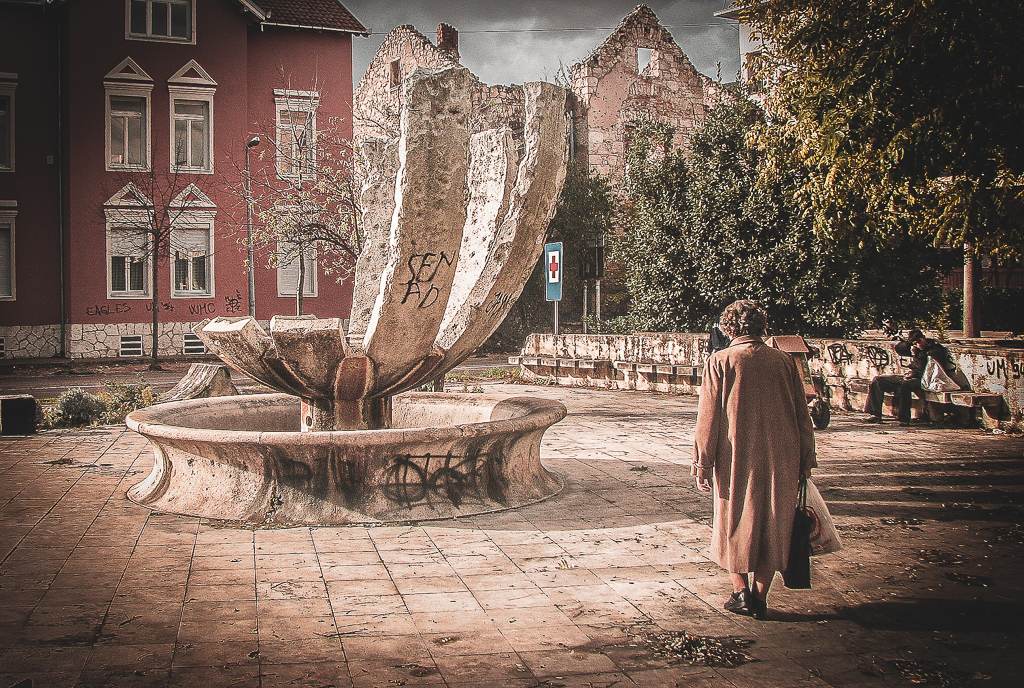
Bosnian people getting on with their daily routine while memories of war remain all around them

Apt buildings where people currently live pockmarcked with bullet holes

Hole from a shell
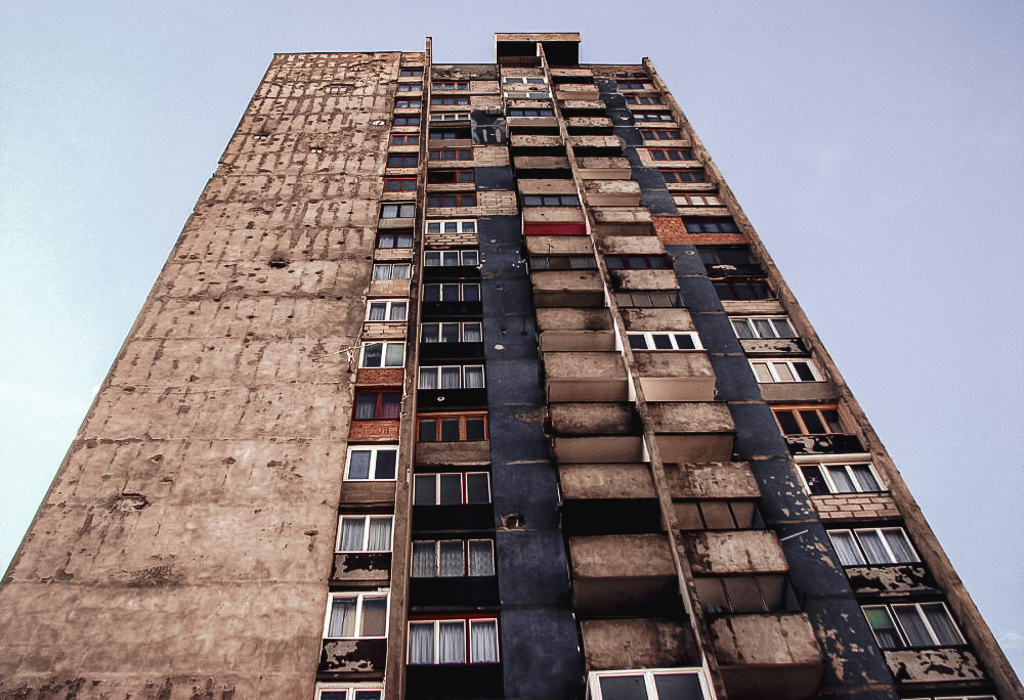
Apt building riddled with bullets and shells

This is an outdoor market where people today buy produce just as they did during the war. A memorial behind this man memorializes the dozens of people in the market killed when a shell fired from the Bosnian forces in the mountains landed in the market.
Sarajevo was host to the 1984 winter Olympics and much of its Olympic infrastructure remains like these bobsled tracks that we visited in the mountains. We had to be careful where we walked since live landmine fields still remain.

Bobsled track from 1984 Olympics

Landmine field
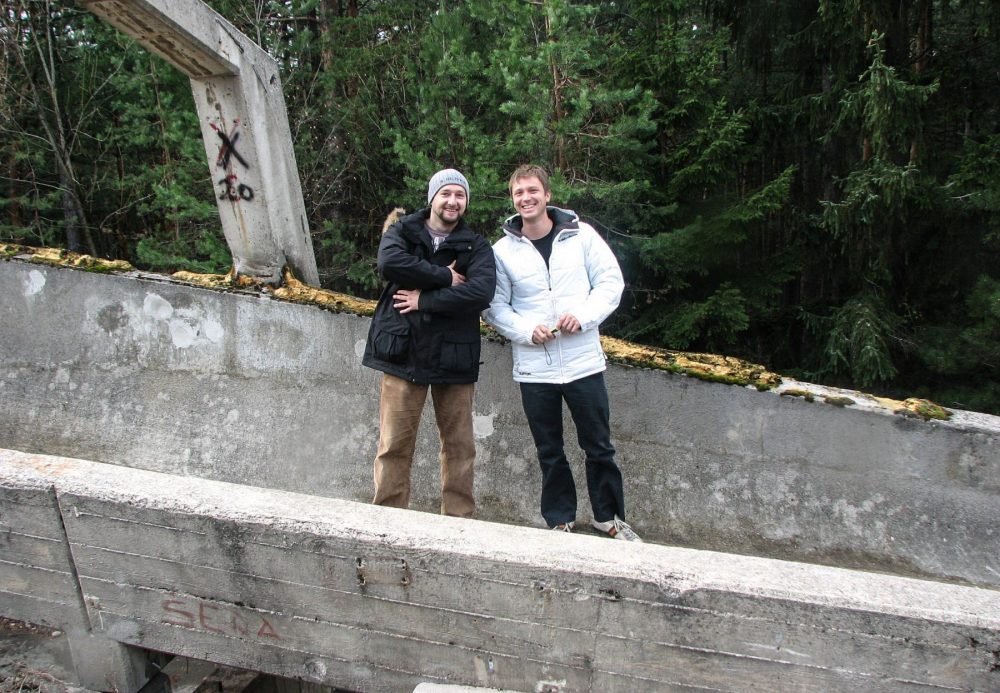
Dan and our Bosnian driver/guide we hired for the day to show us around Serejevo

View of Serejevo from where Serb forces were once perched overlooking the city

A graveyard where a fierce firefight broke out leaving dozens of soldiers dead lying on the graves of their ancestors.

Stray puppies play on the gravestones

Dan at the restaraunt dedicated to the Yugoslav communist dictaor Tito
The most interesting place we visited were the tunnels built beneath the airport. Serb forces surrounded all of Sarajevo with the exception of the airport. The siege of Sarajevo lasted 1,425 days resulting in 14,000 deaths and during this time the city was cut off from all vital supplies from the outside world. The airport although controlled by Bosnians was too exposed to sniper fire from nearby mountains so Bosnians constructed tunnels that ran under the airport to transport much needed supplies that helped keep Sarajevo from falling to the Serbs util eventually a NATO bombing Campagne of Serb forces resulted a peace accord. We visited the tunnels and were able to wander beneath them for a long way before we decided to turn back. The tunnels still run all the way underneath the airport that is now operational and where we departed to Belgrade, Serbia.

Entrance to the tunnels that ran under the airport. The tunnel that Bosnians built as a lifeline to smuggle in food, and supplies beneath sniper fire of the Serbian armies and under the airport during the siege of Sarejevo
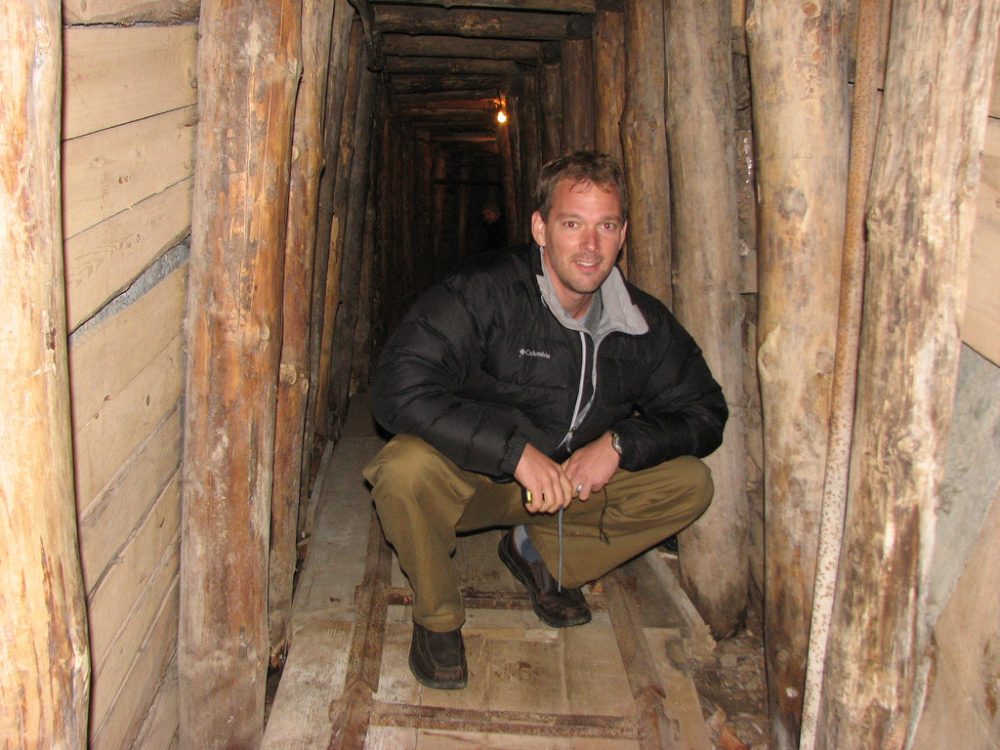
Me in the tunnel that ran under the airport

The airport with a rainbow of hope for the future
On our last day, we departed Sarajevo via plane to Belgrade, Serbia where we went to better understand the Serbian side of the conflict.

